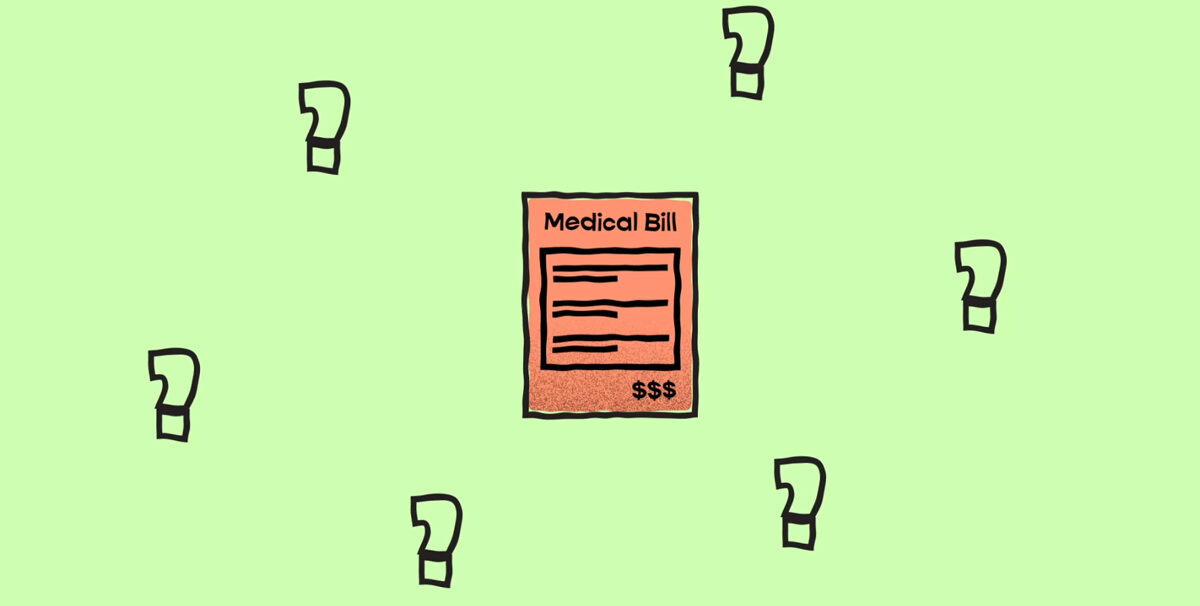Diabetes comes in two forms: Type 1 and Type 2. While Type 2 diabetes is far more common, both can be deadly, as they affect the body’s insulin production. Over 34 million U.S. adults have some form of diabetes, and 1 in 5 don’t even know it, according to the Centers for Disease Control and Prevention. November is American Diabetes Month, so take the time now to learn more about this serious disease. Get your A1C checked and check out the weekly health action prompts below to learn more and take charge of your health!
To help maintain your health, it’s important to first understand diabetes risk factors and symptoms. Unfortunately, little is known about why people develop diabetes. For Type 1 diabetes, health experts believe family history and age may play a role. For Type 2 diabetes, the risk factors are a bit clearer and are lifestyle related, include being overweight, inactivity, race, ethnicity, and having a family history of diabetes
Take action each week:
Prediabetes
Before being diagnosed with Type 2 diabetes, most people develop “prediabetes,” a serious medical condition in which blood glucose levels are higher than normal.
People with prediabetes often have no signs or symptoms, or don’t recognize them because they develop slowly over a period of time.
Risk Factors
If you are overweight and age 45 or older – You should be checked for prediabetes during your next routine medical office visit.
If your weight is normal and you are over age 45 – You should ask your doctor during a routine office visit if testing is appropriate.
If you are under age 45 and overweight – Your doctor should recommend testing if you have any other risk factors for diabetes, including:
- High blood pressure
- Low HDL cholesterol and high triglycerides
- History of gestational diabetes or delivering a baby weighing 9 pounds or more
- Family history of diabetes
- Belonging to an ethnic or minority group at high risk for diabetes, including African-Americans, Latinos, Native Americans, or Asian Americans/Pacific Islanders
Screening and Diagnosis
Screening guidelines for prediabetes and Type 2 diabetes are as follows:
- Fasting blood glucose of 100 mg/dl or lower is considered normal.
- Fasting blood glucose elevated to 100 – 125 mg/dl indicates pre-diabetes.
- Fasting blood glucose elevated to 126 mg/dl or higher indicates diabetes.
If your blood glucose levels are in the normal range, follow-up tests should occur every three years. If your results indicate prediabetes, you should be re-tested every one to two years after your diagnosis.
Prevention and Treatment
If diagnosed with prediabetes, you can and should do something about it. Studies show that people with this condition can prevent or delay the development of Type 2 diabetes through lifestyle changes, including:
- Moderate weight loss (reducing total body weight by 7 percent)
- Regular exercise (30 minutes a day, 5 days a week)
For some people with prediabetes, early enough intervention can actually return elevated blood glucose levels to the normal range.
Diabetes: Type 1
Formerly called juvenile-onset or insulin-dependent diabetes, 10 percent of those diagnosed with diabetes suffer from type 1. Its symptoms, and the resulting diagnoses, most often occur in childhood or early adolescence, but can strike adults as well.
Onset
When a person is diagnosed with type 1 diabetes, it means that their pancreas does not generate insulin. Insulin is a hormone that helps move glucose from food into cells to generate energy. Without insulin, too much glucose, or sugar, stays in the blood. Over time, high blood sugar can lead to many serious complications, including:
- Heart disease
- Blindness
- Nerve damage
- Kidney damage
Symptoms and Diagnosis
Symptoms of type 1 diabetes may include the following:
- Being very thirsty
- Urinating often
- Feeling very hungry or tired
- Losing weight without trying
- Having sores that heal slowly
- Having dry, itchy skin
- Losing the feeling in your feet or having tingling in your feet
- Having blurry eyesight
A blood test can show if diabetes is present. If it is, insulin is required to control blood sugar levels.
Self-care
Although it is a lifelong condition that requires constant treatment and management, there is a lot that can be done in order to prevent further health complications:
Make a commitment to diabetes management.
- Learn all you can about type 1 diabetes.
- Make healthy eating and physical activity part of your daily routine.
- Establish a relationship with a diabetes educator, and ask the diabetes treatment team for help when needed.
Identify yourself.
- Wear a tag or bracelet that says you have diabetes.
- Keep a glucagon kit nearby in case of a low blood sugar emergency—make sure friends, coworkers and loved ones know how to use it.
See doctors often. Regular diabetes checkups do not replace yearly physicals or routine eye exams.
- Schedule a yearly physical to check for any diabetes-related complications and to screen for other medical problems.
- Schedule regular eye exams to check for signs of retinal damage, cataracts and glaucoma.
Keep immunizations current. High blood sugar can weaken the immune system.
- Get a flu shot every year.
- Get a tetanus booster shot every 10 years.
- Your doctor may recommend the pneumonia vaccine or other immunizations as well.
Take care of your teeth. Diabetes may leave you prone to gum infections.
- Brush your teeth at least twice a day.
- Floss your teeth once a day.
- Schedule dental exams at least twice a year.
- Consult your dentist immediately if your gums bleed or look red or swollen.
Pay attention to your feet. High blood glucose from diabetes can cause nerve damage and low blood flow.
- Wash your feet daily in lukewarm water.
- Dry them gently, especially between the toes, and moisturize with lotion.
- Check your feet every day for blisters, cuts, sores, redness or swelling.
- Consult your doctor if you have a sore or other foot problem that does not start to heal within a few days.
Keep your blood pressure and cholesterol under control.
- Eat healthy foods.
- Exercise regularly.
- Take any prescribed medications.
Do not smoke. Smoking increases your risk of various diabetes complications, including heart attack, stroke, nerve damage or kidney disease.
- Smokers who have diabetes are three times more likely to die of cardiovascular disease than non-smokers who have diabetes.
- Talk to your doctor about ways to stop smoking or using other types of tobacco.
Drink responsibly. Alcohol can cause either high or low blood sugar, depending on how much you drink and if you eat at the same time. If you choose to drink:
- Do so only in moderation.
- Make sure a meal is included.
- Remember to include the calories from any alcohol you drink in your daily calorie count.
Take stress seriously. Stress makes it easy to abandon your usual diabetes management routine. The body’s hormones produced in response to prolonged stress may prevent insulin from working properly, which only makes matters worse. To take control:
- Set limits.
- Prioritize your tasks.
- Learn relaxation techniques.
- Get plenty of sleep.
Diabetes: Type 2
Between 90% and 95% of those diagnosed with diabetes in the United States have Type 2 diabetes. Formerly called adult onset diabetes or noninsulin-dependent diabetes, the condition is increasing at an alarming rate due to the current obesity levels in the United States.
About the Condition
Type 2 diabetes causes the body to resist insulin, a hormone that controls the absorption of sugar. As a result, a normal glucose level cannot be maintained. People can develop Type 2 diabetes at any age, including during childhood years. Unlike Type 1 diabetes, Type 2 is usually preventable with a balanced diet and exercise. Unfortunately, once present, Type 2 diabetes cannot be cured, and can be life-threatening if left untreated.
Causes and Risk Factors
While it is not completely understood why some people develop Type 2 diabetes, research has shown the following factors significantly increase the risk of developing the disease.
- Obesity
- Physical inactivity
- Genetics
- High blood pressure
- Abnormal cholesterol levels
- Ethnicity (being African American, Pacific Islander, Hispanic/Latino, American Indian or Asian American)
- Age (risk increases as you get older, especially after age 45)
- Having pre-diabetes—left untreated, it likely will develop into Type 2 diabetes
- Previously or currently having gestational diabetes
- Giving birth to a baby weighing more than 9 pounds
Symptoms
Consult your doctor if you’re concerned about diabetes, or if the following symptoms appear:
- Increased thirst and frequent urination
- Extreme hunger
- Weight loss despite eating more than usual
- Blurred vision
- Fatigue
- Slow-healing sores or frequent infections
- Patches of dark skin in folds and creases of the body
Testing
It is recommended that anyone 45 years of age or older consider getting tested for diabetes, as well as those under age 45 who are overweight. The following tests are used for diabetes diagnoses:
- Fasting plasma glucose test: This measures blood glucose after abstaining from eating for at least eight hours.
- Oral glucose tolerance test: This measures blood glucose after at least eight hours without eating and two hours after drinking a glucose-containing beverage
- Random plasma glucose test: During this test, the physician checks blood glucose no matter when the last meal was consumed. This test is administered in addition to an assessment of symptoms such as increased thirst and urination, and unexplained weight loss.
Positive results should be confirmed by repeating the fasting plasma glucose test or oral glucose tolerance test on another day.
Management
Those diagnosed with Type 2 diabetes need to follow a stringent daily plan to ensure that blood glucose is kept in the proper range, such as:
- Following a specific meal plan
- Being physically active
- Taking prescribed medication, including insulin if needed
- Testing blood glucose as recommended
- Keeping daily records of blood glucose levels and any unusual issues that come up during the day
Dangers and Complications
Left uncontrolled, there are several serious complications that can arise from type 2 diabetes, such as:
- Heart and blood vessel disease
- Blindness or eye disease
- Kidney failure
- Nerve damage
- Osteoporosis
- Skin infections
- Alzheimer’s disease
- Gum infections
Prevention
Take the following precautions to help avoid developing Type 2 diabetes:
- Get a routine diabetes screening.
- Make healthy food choices—select foods low in fat like fruits, vegetables and whole grains.
- Monitor salt intake and choose foods with a low salt content.
- Get more physical activity—aim for 30 to 60 minutes of moderate physical activity a day. If a long workout is not possible, break it up into smaller sessions spread throughout the day.
- Lose excess weight—even a loss of 10 pounds may lower the risk of developing Type 2 diabetes.
For more information, contact the American Diabetes Association at www.diabetes.org.
Take the Type 2 Risk Test
Take the American Diabetes Association 60-second Type 2 Diabetes Risk Test. Take the test for yourself or for a loved one.





